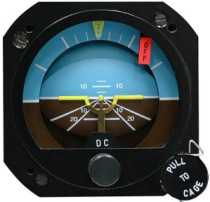 The attitude of an aircraft – its orientation relative to the earth – affects everything in flying. Roll slightly and the aircraft will turn and change course. Inch the nose up and the aircraft will slow down and start climbing. Allow the nose to drop and it’ll speed up and lose altitude. For a pilot, maintaining the proper attitude is critical to maintaining control of the aircraft.
The attitude of an aircraft – its orientation relative to the earth – affects everything in flying. Roll slightly and the aircraft will turn and change course. Inch the nose up and the aircraft will slow down and start climbing. Allow the nose to drop and it’ll speed up and lose altitude. For a pilot, maintaining the proper attitude is critical to maintaining control of the aircraft.
Maintaining a proper attitude is just as important for leaders. If I allow fear or worry to adversely effect my attitude – even slightly – I’ll veer off course. A touch of pessimism could cause the team to slow down and waste energy. Likewise, over-confidence might cause us to gain too much speed and lose perspective. So how do you maintain a proper attitude?
Pilots have a nifty gauge called an attitude indicator to help them stay on top of the aircraft’s attitude. It’s quite handy – and essential when flying in the clouds or over the ocean at night. Before a flight, pilots always “cage” their attitude indicators – a process that ensures the instrument starts off aligned with the earth’s actual horizon. This process of caging can also be applied in flight to reset the device if it starts to “tumble” due to severe aerobatic maneuvers.
I try to “cage” my attitude first thing every morning to make sure it’s aligned with the truth. If I don’t, I’m tossed about by whims and circumstances all day. When I’m successful, it’s much easier to navigate the day’s decisions. If, during the day, I sense my attitude start to tumble, I take a quick time-out to “level my wings” and make sure I’m aligned with what’s true.
How do you maintain a proper attitude for yourself and your team?
- Click to share on X (Opens in new window) X
- Click to share on Facebook (Opens in new window) Facebook
- Click to share on LinkedIn (Opens in new window) LinkedIn
- Click to share on Reddit (Opens in new window) Reddit
- Click to email a link to a friend (Opens in new window) Email
- Click to print (Opens in new window) Print